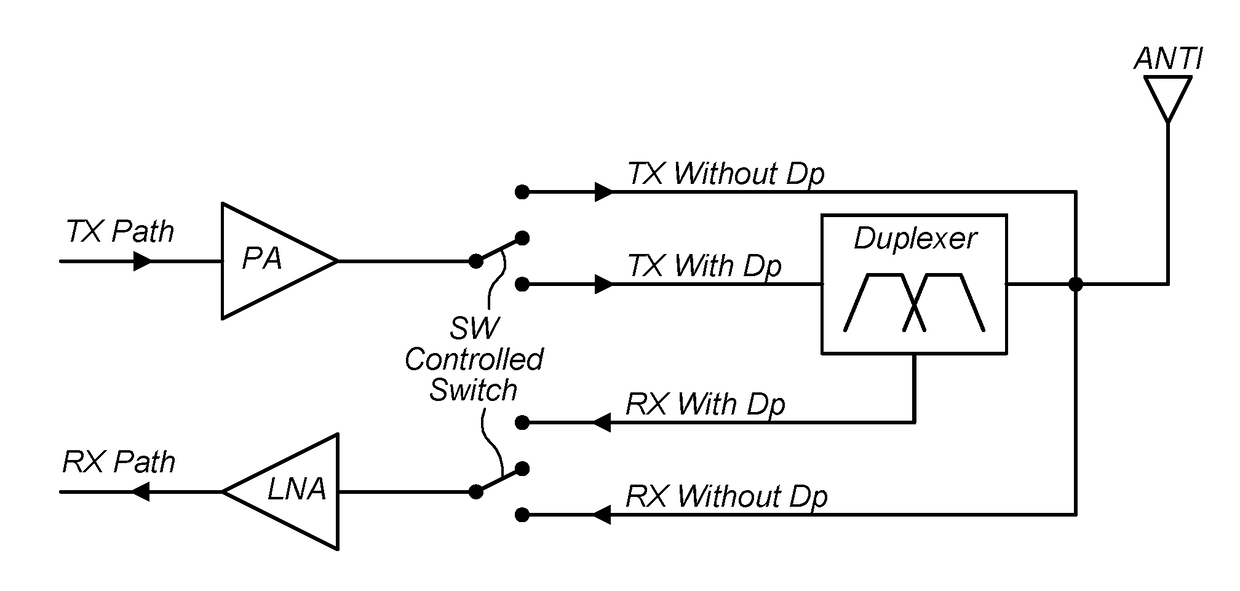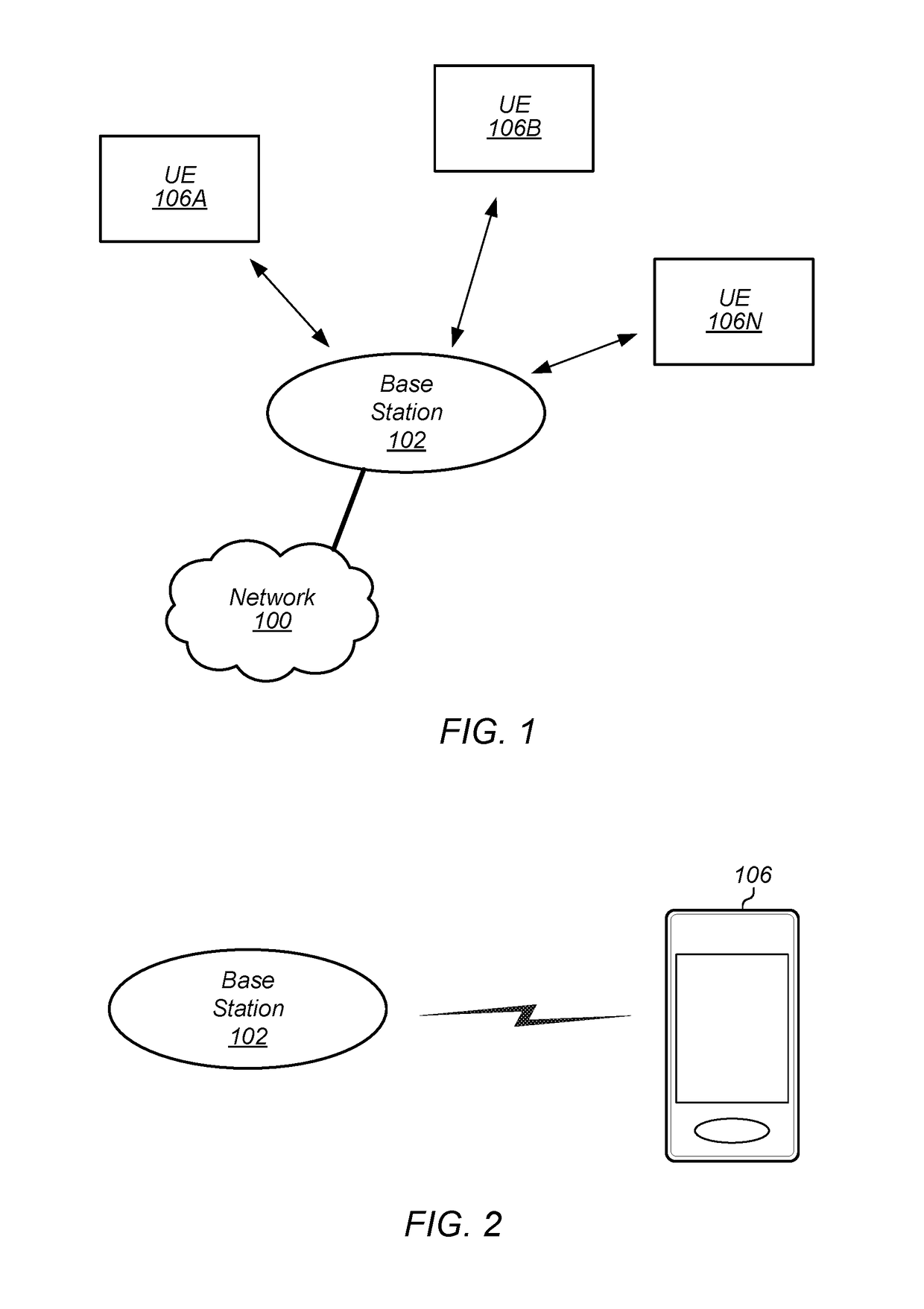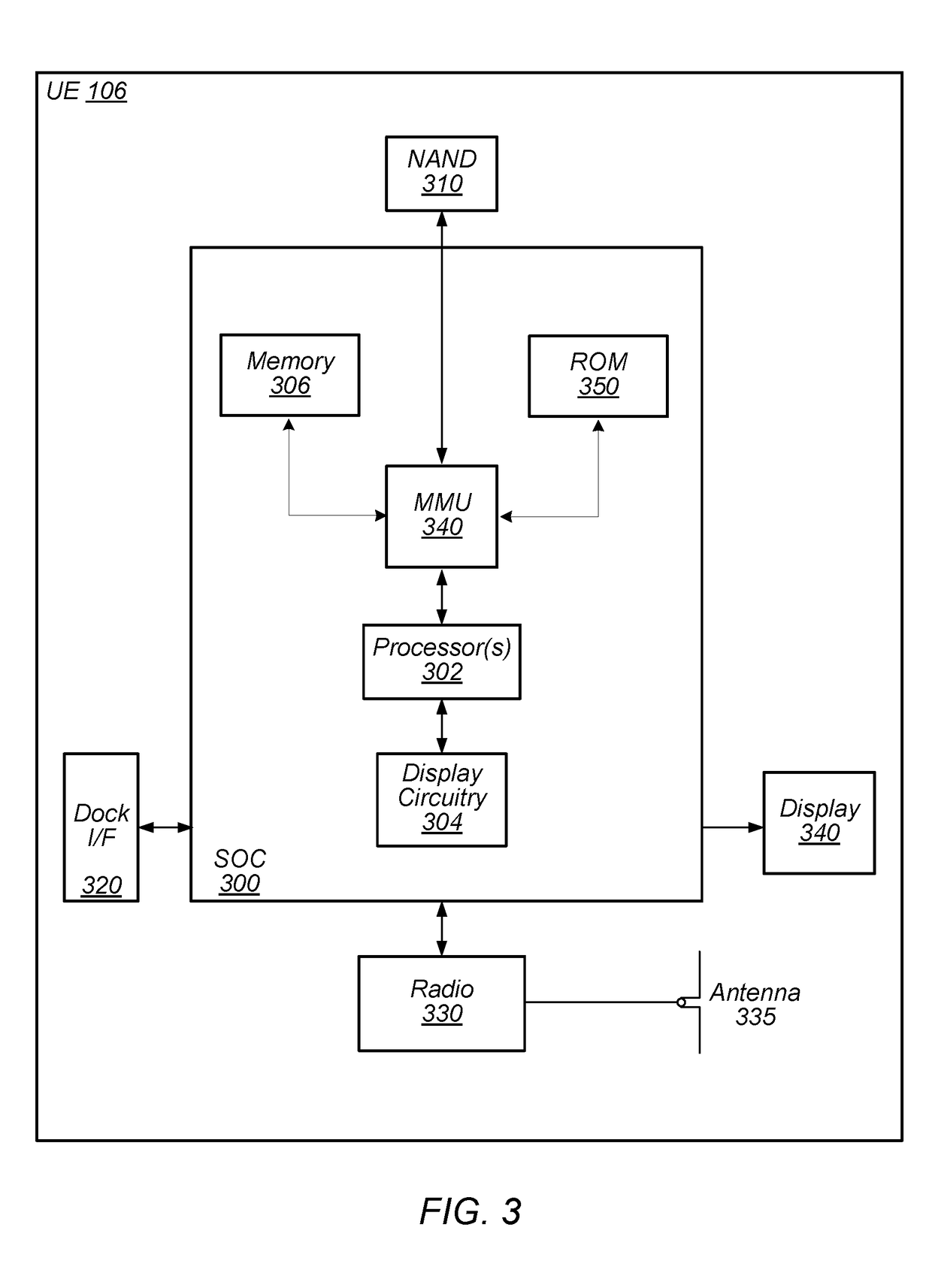User Equipment That Autonomously Selects Between Full and Half Duplex Operations
a user equipment and half-duplex technology, applied in the field of wireless communication, can solve the problems of limited battery and/or power capacity, limited link budget, reduced capabilities relative to a “normal device", etc., and achieve the effect of facilitating a half-duplex mode, greater sensitivity, and more power
- Summary
- Abstract
- Description
- Claims
- Application Information
AI Technical Summary
Benefits of technology
Problems solved by technology
Method used
Image
Examples
Embodiment Construction
Acronyms
[0020]Various acronyms are used throughout the present application. Definitions of the most prominently used acronyms that may appear throughout the present application are provided below:
[0021]UE: User Equipment
[0022]BS: Base Station
[0023]DL: Downlink (from BS to UE)
[0024]UL: Uplink (from UE to BS)
[0025]FDD: Frequency Division Duplexing
[0026]TDD: Time Division Duplexing
[0027]GSM: Global System for Mobile Communication
[0028]LTE: Long Term Evolution
[0029]TX: Transmission
[0030]RX: Reception
[0031]UMTS: Universal Mobile Telecommunication System
[0032]LAN: Local Area Network
[0033]WLAN: Wireless LAN
[0034]RAT: Radio Access Technology
Terminology
[0035]The following is a glossary of terms used in this disclosure:
[0036]Memory Medium—Any of various types of non-transitory memory devices or storage devices. The term “memory medium” is intended to include an installation medium, e.g., a CD-ROM, floppy disks, or tape device; a computer system memory or random access memory such as DRAM, DDR...
PUM
 Login to View More
Login to View More Abstract
Description
Claims
Application Information
 Login to View More
Login to View More - R&D
- Intellectual Property
- Life Sciences
- Materials
- Tech Scout
- Unparalleled Data Quality
- Higher Quality Content
- 60% Fewer Hallucinations
Browse by: Latest US Patents, China's latest patents, Technical Efficacy Thesaurus, Application Domain, Technology Topic, Popular Technical Reports.
© 2025 PatSnap. All rights reserved.Legal|Privacy policy|Modern Slavery Act Transparency Statement|Sitemap|About US| Contact US: help@patsnap.com



